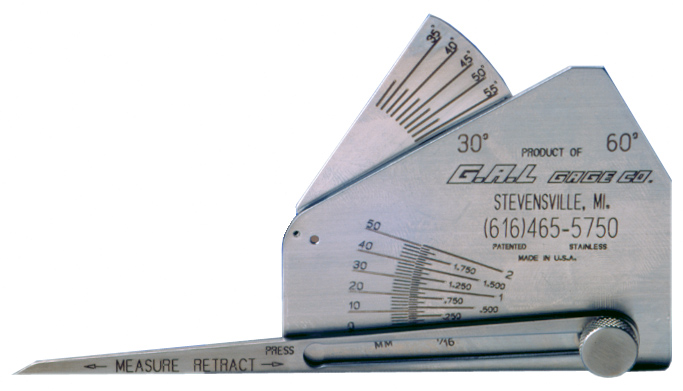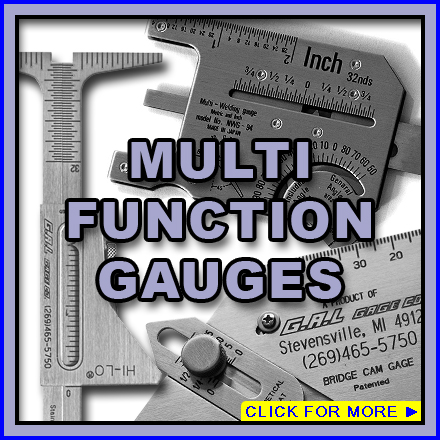Recognizing Gauge Fillet Weld: A Comprehensive Guide for Welders
Recognizing Gauge Fillet Weld: A Comprehensive Guide for Welders
Blog Article
Ingenious Approaches to Fillet Weld Inspection and Screening: Enhancing Weld Top Quality and Compliance Specifications
In the realm of welding, the quality and stability of fillet welds play an important function in making sure the architectural strength and dependability of various commercial elements. With the constant drive for boosted effectiveness and conformity with rigid standards, the expedition of ingenious approaches to fillet weld inspection and screening has come to be imperative.
Advanced Non-Destructive Screening Methods
Making use of advanced technologies, progressed non-destructive testing techniques play an important role in making sure the stability and top quality of fillet welds. These techniques, such as phased variety ultrasonic screening (PAUT) and magnetic fragment screening (MPT), deal comprehensive insights into the weld's inner structure without causing any kind of damages to the material. PAUT, as an example, uses several ultrasonic components to check the weld from numerous angles, providing an extensive visualization of prospective defects like lack of blend or fractures.
In A Similar Way, MPT works in identifying surface-breaking problems by applying a magnetic field and iron fragments to the weld area. This technique is particularly useful for determining gaps that may compromise the weld's strength. By utilizing these innovative non-destructive screening strategies, weld inspectors can accurately examine the top quality of fillet welds, making sure conformity with sector criteria and policies. The capacity to discover flaws early not only improves weld top quality but additionally protects against costly rework or failures in architectural integrity, highlighting the value of these cutting-edge testing approaches in welding evaluations.
Robotics and Automation in Assessment

The combination of robotics and automation has revolutionized the inspection procedure for fillet welds, improving efficiency and precision in quality analysis. Robotics supply exact control and repeatability in examining welds, guaranteeing reputable and regular outcomes. Automated systems can be configured to adhere to certain evaluation courses, making sure thorough coverage of welds and minimizing the threat of human mistake.
Robot evaluation systems outfitted with advanced sensors can find and gauge weld features with high precision, supplying thorough data for analysis. These systems can determine issues such as cracks, lack of fusion, and porosity, allowing punctual rehabilitative activities to be taken. In addition, robotics and automation allow for real-time data collection and analysis, supplying instant feedback to operators and facilitating fast decision-making processes.
Additionally, using robotics and automation in fillet weld assessment boosts total productivity by decreasing examination times and raising evaluation throughput. By enhancing the examination process, makers can ensure weld quality and conformity criteria are satisfied efficiently, eventually leading to set you back financial savings and boosted product high quality.
Using Artificial Knowledge for Analysis
Expert system plays a crucial duty in improving the effectiveness and accuracy of analysis in fillet weld inspection procedures. By taking advantage of the power of AI, examiners can improve the analysis of weld quality and conformity criteria, bring about extra reliable and accurate results. AI algorithms can swiftly process vast amounts of information from weld assessments, spotting flaws or variances that might be challenging to relate to the nude eye. This innovative modern technology allows real-time monitoring of weld top quality, allowing for instant rehabilitative actions to be taken if any issues are detected.
Moreover, AI systems can pick up from past inspection data, continuously enhancing their capability to recognize possible flaws and variances in fillet welds. This adaptive understanding capability improves the general quality control process, minimizing the possibility of human error and ensuring that welds meet the required criteria. By incorporating expert system into fillet weld evaluation, sectors can attain greater degrees of performance, consistency, and compliance in their evaluation methods.
Portable Devices for On-Site Examination
Enhancing area inspection effectiveness, the fostering of mobile devices revolutionizes on-site analysis processes for fillet welds. These tools supply adaptability and benefit, allowing examiners to carry out complete assessments in numerous locations, including challenging or remote environments. Mobile devices such as ultrasonic screening gadgets, magnetic bit assessment tools, and electronic radiography systems give real-time data and high-resolution imaging capacities, making it possible for fast decision-making and instant feedback on weld top quality.
One substantial advantage of learn this here now portable devices is their capacity to simplify examination treatments, lowering downtime and boosting total productivity - Gauge Fillet Weld. Assessors can quickly transport these tools to various task websites, getting rid of the requirement for carrying heavy equipment or elements to off-site centers. Furthermore, the portability of these devices promotes cost-effectiveness by decreasing transport expenses and increasing assessment timelines
In addition, making use of portable devices for on-site assessment promotes positive quality control actions, as assessors can immediately recognize and deal with any type of prospective welding issues or disparities. By integrating these cutting-edge technologies right into on-site inspection methods, welding professionals can guarantee conformity with industry requirements and improve weld high quality, ultimately causing boosted structural stability and safety and security in numerous welding applications.
Integration of Information Administration Solution

Having actually optimized on-site inspection procedures with the utilization of mobile tools, the following phase involves the smooth assimilation of data monitoring systems to additionally enhance performance and data evaluation abilities in fillet weld inspection and screening. By integrating information monitoring systems into the Our site examination process, companies can improve information collection, storage, and evaluation. This integration enables real-time monitoring of weld top quality, instant identification of issues, and timely decision-making to rectify any type of issues that might develop during the examination process.
Information management systems play a critical role in systematizing evaluation information, facilitating simple accessibility for authorized workers, and making certain data stability and security. Through the combination of these systems, assessors can generate detailed records, track historical information for fad evaluation, and boost total process efficiency. Moreover, the assimilation of information management systems allows smooth interaction in between various stakeholders associated with the assessment procedure, cultivating cooperation and boosting overall quality assurance procedures. Ultimately, the combination of data management systems offers to elevate the criteria of fillet weld assessment and screening, making certain compliance with industry guidelines and boosting weld quality.
Verdict
Finally, ingenious strategies to fillet weld inspection and testing have actually dramatically boosted weld high quality and compliance Web Site requirements. Advanced non-destructive testing approaches, robotics, automation, man-made knowledge, mobile devices, and information management systems have transformed the way weld assessments are carried out. By making use of these innovations, sectors can make sure that welds meet the needed top quality requirements and laws, ultimately boosting overall effectiveness and safety and security in welding processes.

Having actually optimized on-site examination procedures through the application of mobile tools, the following stage involves the smooth integration of data administration systems to even more boost effectiveness and data evaluation capabilities in fillet weld inspection and screening. Inevitably, the combination of data monitoring systems offers to boost the requirements of fillet weld evaluation and screening, ensuring conformity with industry guidelines and enhancing weld high quality.

Report this page